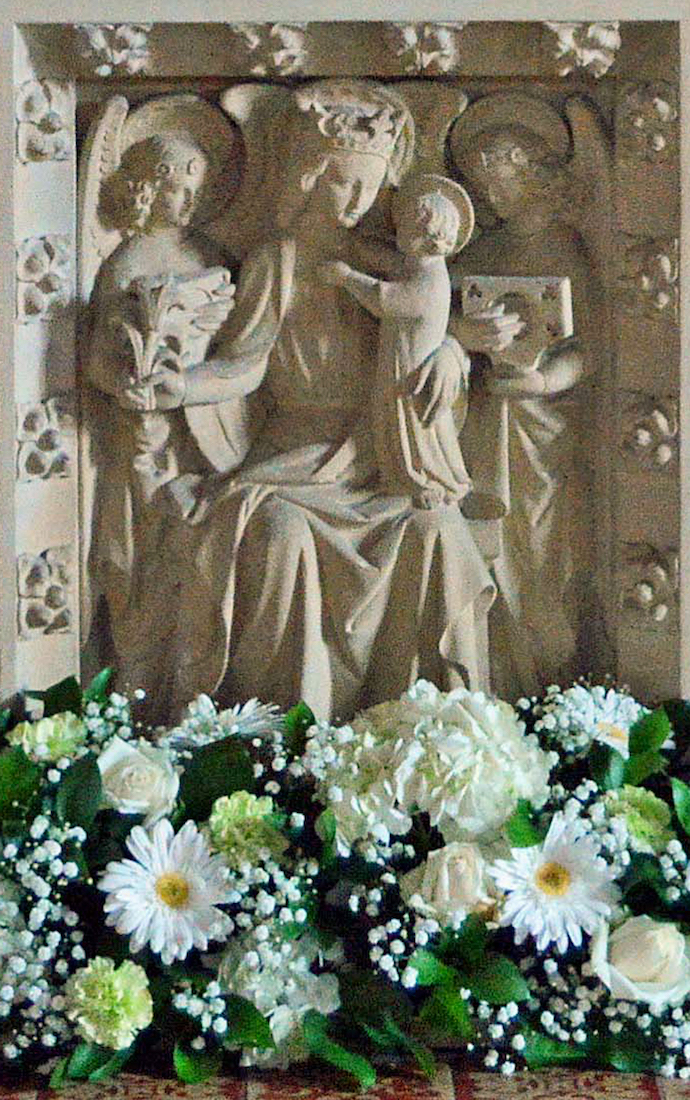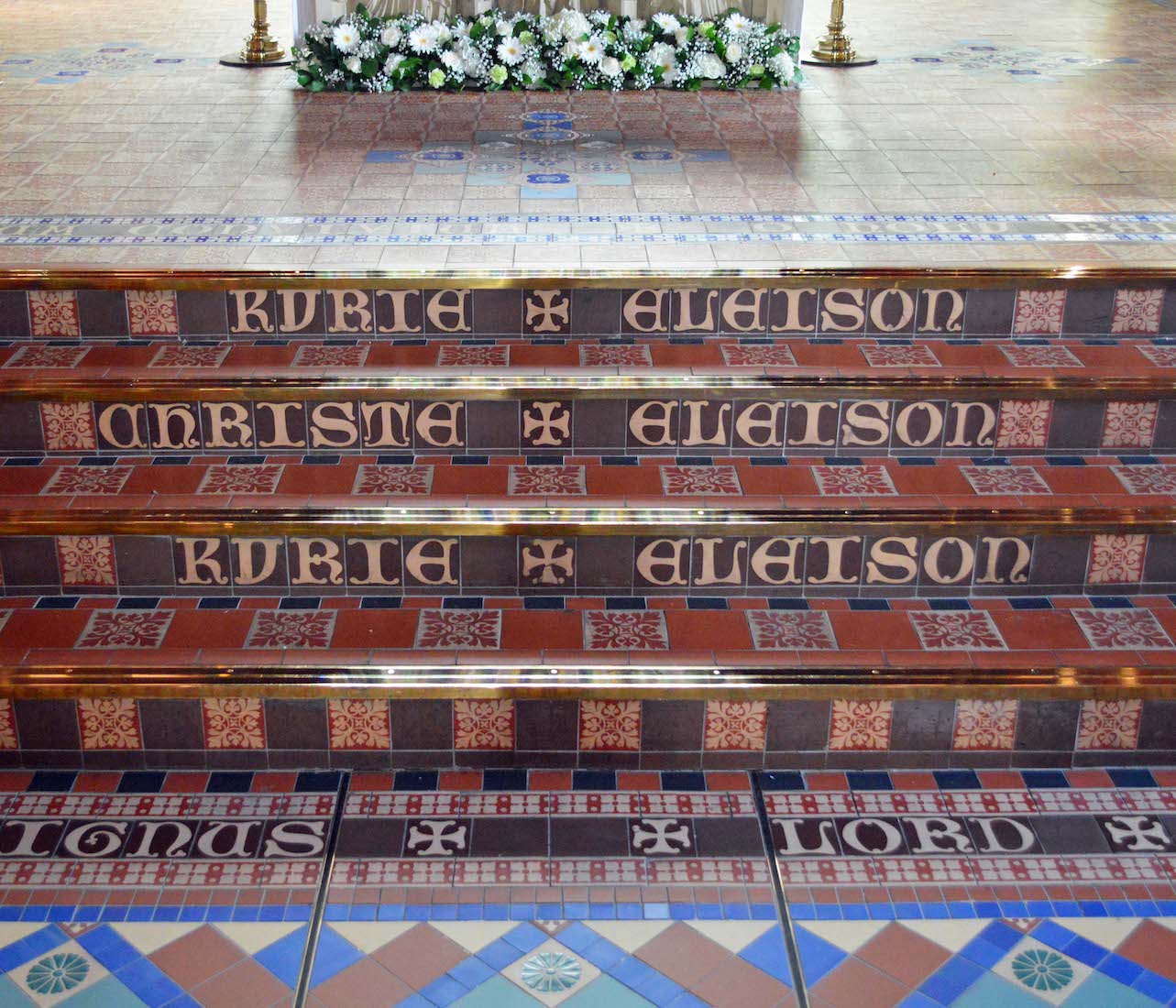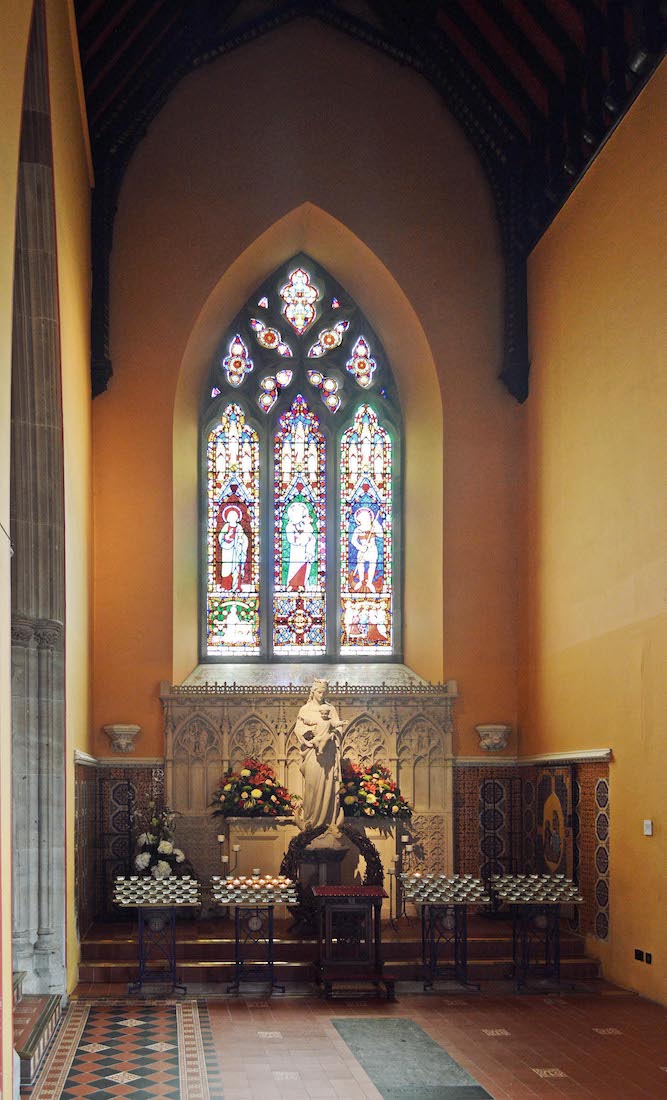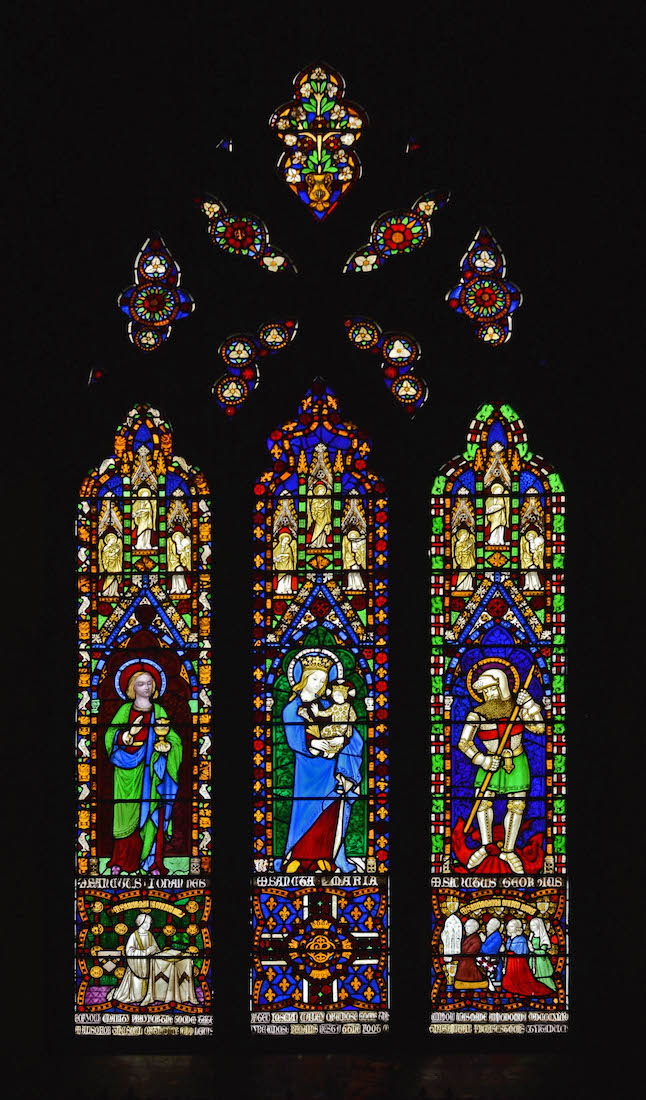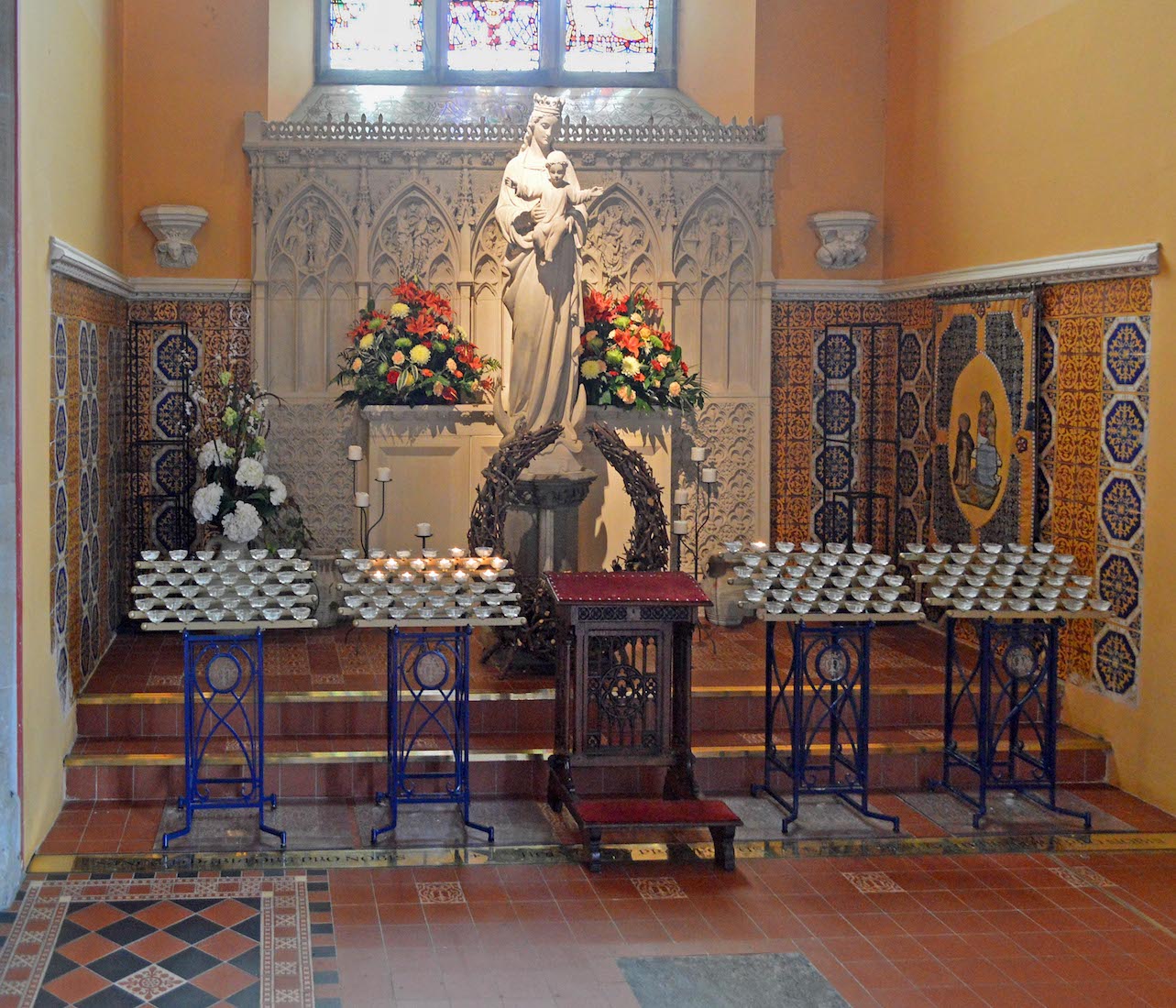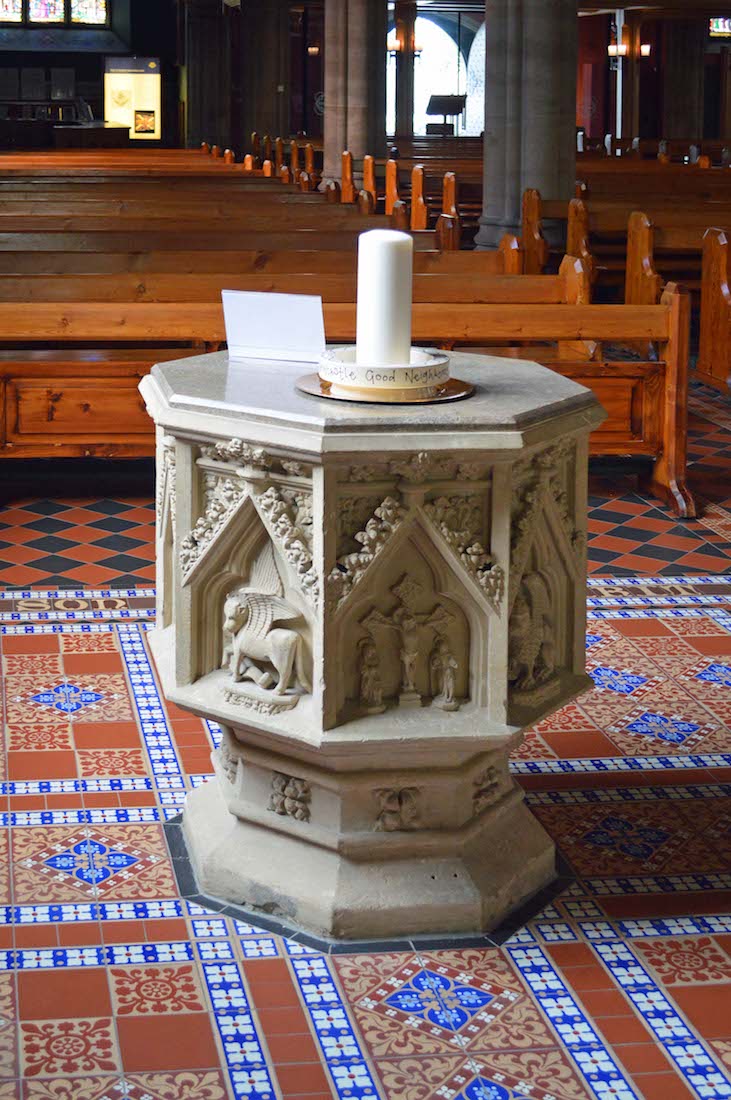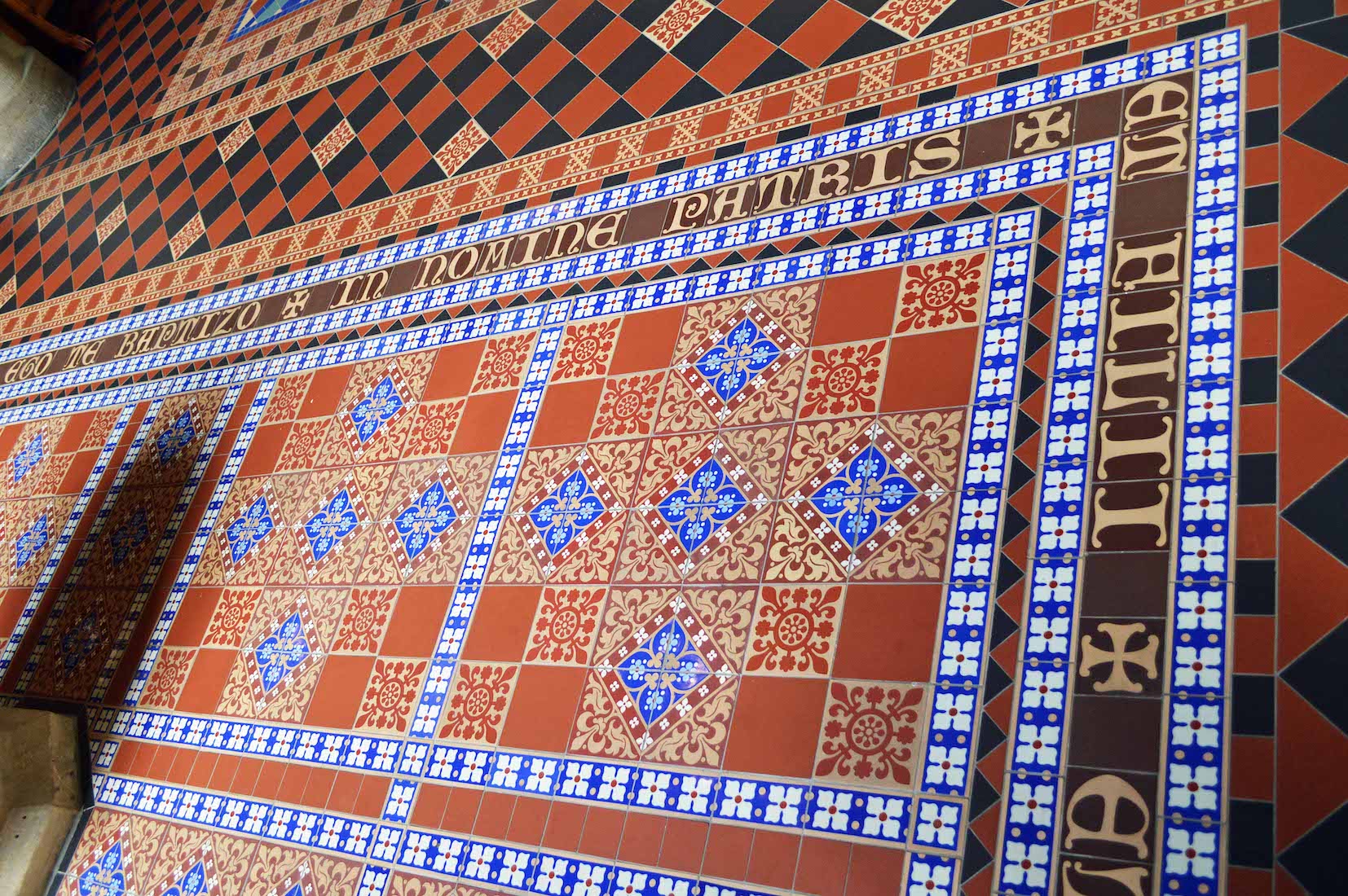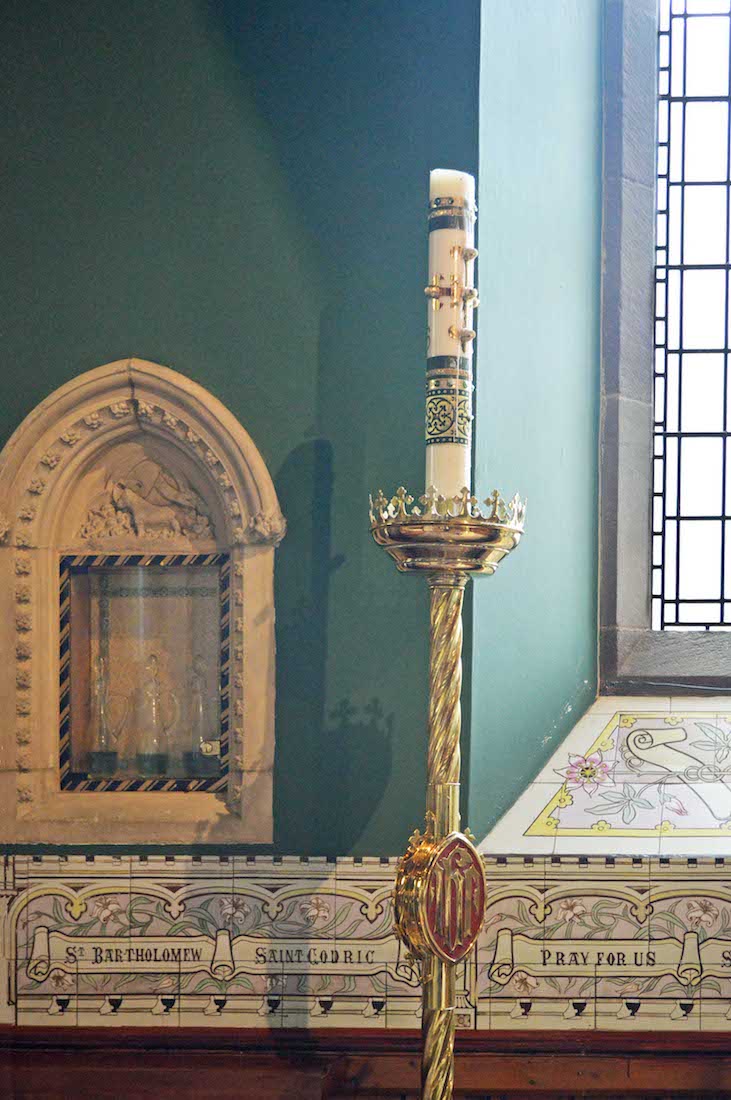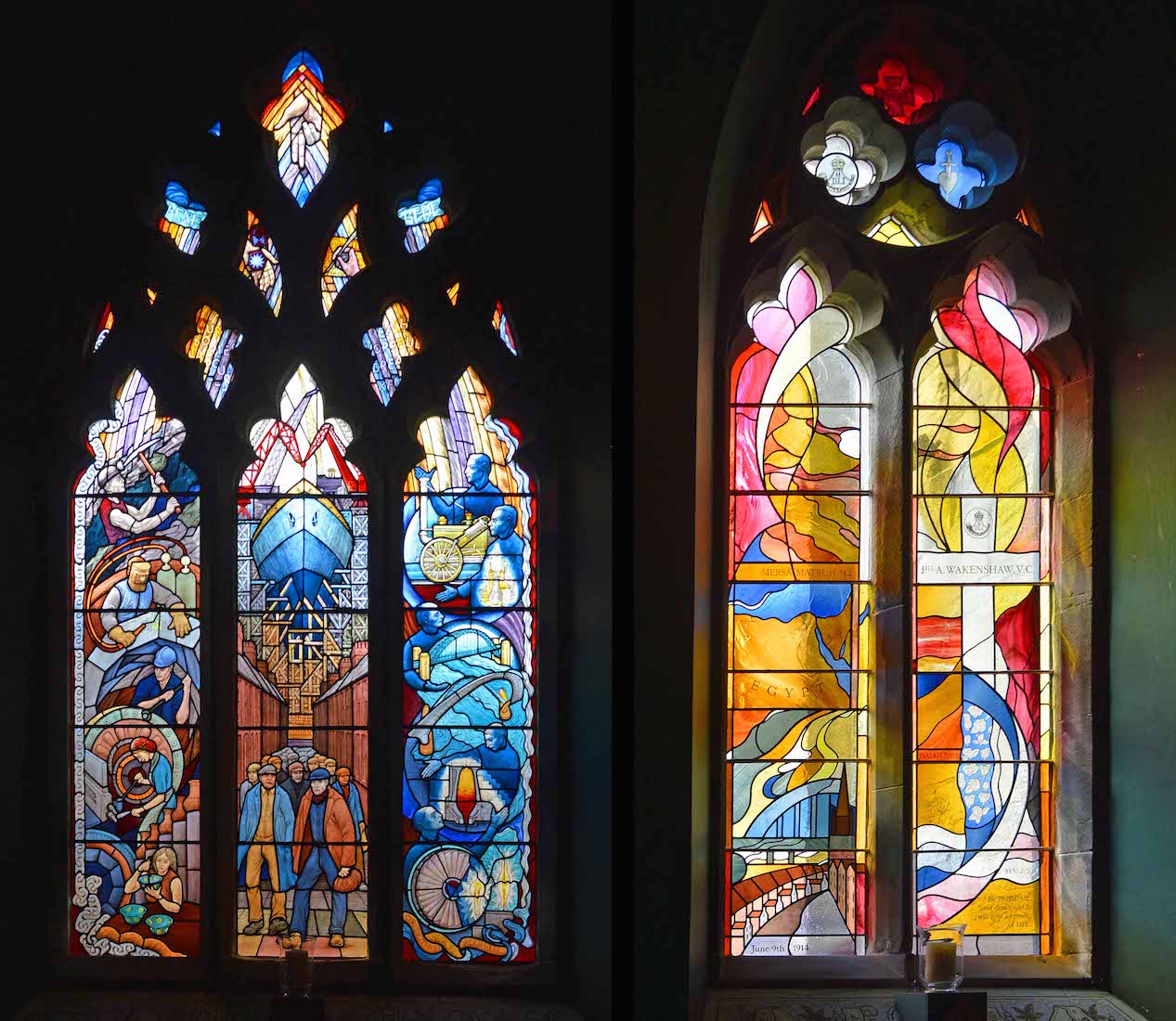
Near the front of the sanctuary area is this ambo or lectern, which was originally part of the pulpit. It is from here that the Scripture is read, and announcements made. PLAN
42. CATHEDRA
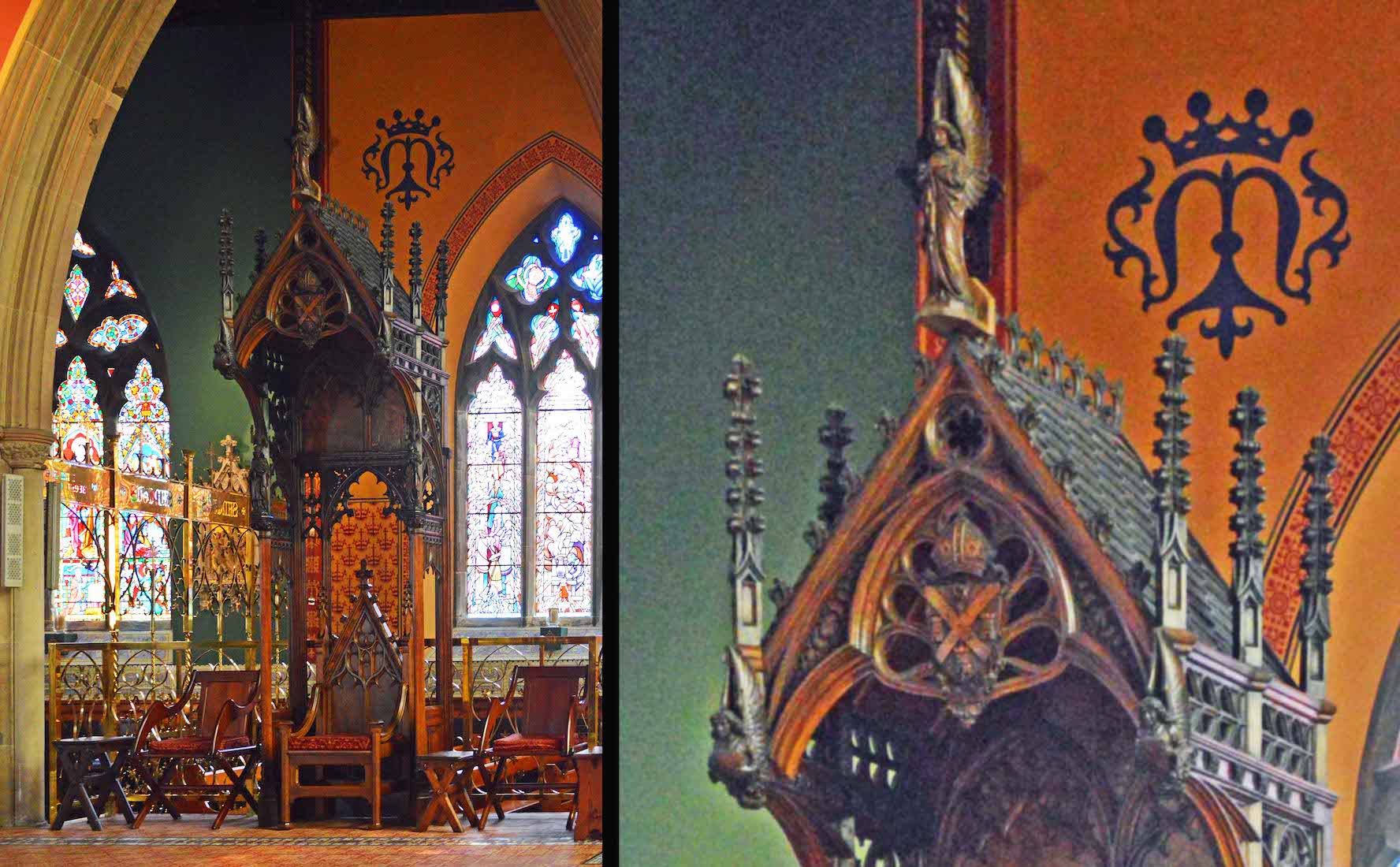
In the Catholic (and Anglican) denominations, a bishop is in charge of a group of churches called a diocese. The bishop is centred at a certain church, and this is signified by the presence of a special chair. In Latin, the word for ‘chair’ is ‘cathedra’, and this gives us the word ‘cathedral’ for the church containing the chair. This cathedra is by woodcarver Ralph Hedley (1848-1913). Notice the ‘M’ logo for the Cathedral on the wall behind.
43. SANCTUARY STEPS
The steps up to the sanctuary bear the words of the Kyrie: ‘Kyrie Eleison, Christe Eleison, Kyrie Eleison’ (Lord have mercy, Christ have mercy, Lord have mercy). This is another example of the frequent use of text in this Cathedral.
45. LADY CHAPEL WINDOW
The Eastern window (2) of the Lady Chapel shows Our Lady, St George and St John the Apostle. The windows of the two side chapels are similar in design.
46. OUR LADY
A statue of Mary and the Child Jesus stands between two displays of flowers. In front is a large crown of thorns, and before that, a prayer desk. On the floor in the foreground is a grave slab marking the tomb of Fr John Eyre (d.1842).
47. VIRGIN AND CHILD
Mary has been venerated since the early days of Christianity. The Orthodox, Roman Catholic, Anglican, and Lutheran churches believe that Mary, as mother of Jesus, is the Mother of God. Jesus of Nazareth was a Jewish preacher and religious leader who has become the central figure of Christianity. Christians believe him to be the Son of God and the awaited Messiah (Christ, the Anointed One) prophesied in the Old Testament.
48. BAPTISTRY
The baptismal font was originally located in the octagonal building attached to the Southwest corner of the Cathedral It was relocated here in 2012, when the Cathedral’s new floor was constructed. Here we see the font and the nearby Paschal candle sited in a fine tiled area featuring the Christian cross.
49. FONT
The font is octagonal in shape, and features carved panels on the sides including a crucifixion scene and various winged creatures – probably originating from the Book of Revelation. Baptism is regarded as the rite of entry into the Church, and the beginning of a life of discipleship in Christ.
50. BAPTISTRY TILING
The floor tiling found in Cathedrals is often a delight to those interested in repeated patterns, and that is certainly true here in St Mary’s.
51. PASCHAL CANDLE
The term ‘Paschal’ comes from the Hebrew word ‘Pesach’, meaning Passover, and relates to the Paschal mystery of salvation. It is sometimes referred to as the ‘Easter candle’ or the ‘Christ candle’. Symbolically it refers to Christ as the Light of the World. Notice the text strip on the wall behind.
52. TEXT STRIP
Around the nave is a long strip of text with names of saints and an exhortation to ‘pray for us’. This portion lies along the South wall of the nave.
53. SOUTH NAVE
As we come near the end of our exploration of St Mary’s, we walk back along the South nave. As with the North wall we observe the text strip already commented on, further Stations of the Cross, and a couple more stained glass windows.
54. SOUTH NAVE WINDOWS
These windows replace earlier stained glass windows destroyed in the Second World War. The left window (19) shows the Northeast industrial heritage of England, while the window on the right (18) is a memorial to Adam Wakenshaw VC. This completes our tour of St Mary’s.
CONCLUSION
I hope you have enjoyed visiting the St Mary’s Cathedral with me. I found it a very interesting Cathedral to visit.
I am happy to receive constructive comments or corrections concerning this website. The best websites are the ones which have no errors! I am grateful to my wife Margie who came to Newcastle with me, and who has proof-read these pages.
Much of the text on this site is not original but has been drawn from other sources, in particular the Cathedral website which has link
http://stmaryscathedral.org.uk/
The photographs which appear on this site are all mine, and can also be found in higher resolution at:
https://www.flickr.com/photos/paulscottinfo/sets/
Paul Scott Site created 11 / 2016; reformatted 4 /2020
